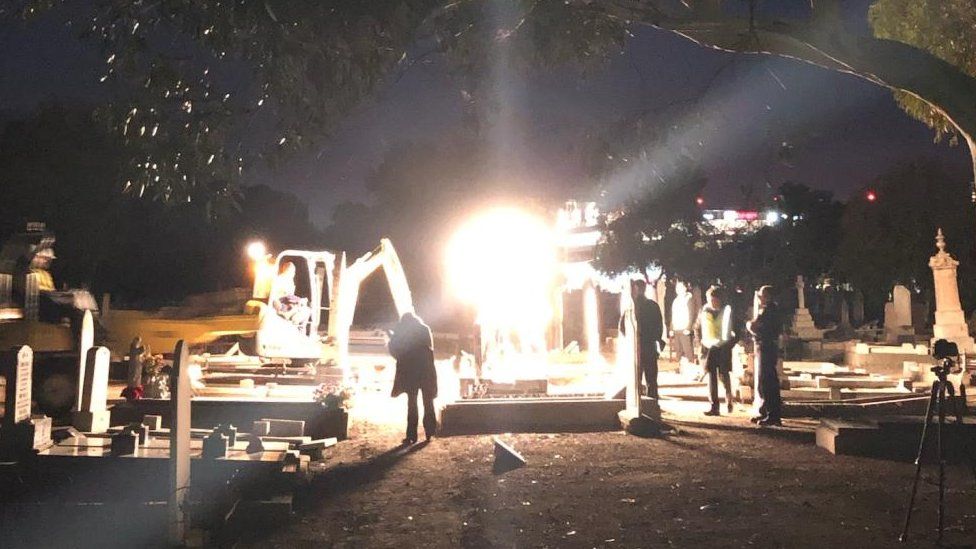Body exhumed in bid to solve Australian mystery

The body of a man found on a South Australian beach more than 70 years ago is being exhumed in the hope of solving one of the country's most intriguing mysteries.
The identity and cause of death of the so-called Somerton man remain unknown.
Over the years many theories have swirled as to his identity, from Cold War spy to rejected lover.
Now, Australian police say advances in DNA technology make exhumation worthwhile.
What do we know so far?
The man's body was found on 1 December 1948 on Somerton beach in the South Australian city of Adelaide. He was slumped against a seawall, dressed in a suit and tie.
His pockets contained nothing to identify him.
Initial investigations and a coronial inquest left the case unsolved. He was put to rest in an Adelaide cemetery under a headstone reading only "the unknown man".
But a number of curious items found on the body encouraged ongoing speculation. They included a suitcase, items of clothing with their labels removed and incoherent writings believed to be a code. He also held a torn scrap of paper with the Farsi words Tamam Shud, or "it's finished" printed on it.
The case has attracted international interest and generated plenty of sleuths online.
"For more than 70 years people have speculated who this man was and how he died," South Australia Attorney General Vickie Chapman said.
Last month Ms Chapman said the decision to exhume the body followed "intense public interest" in the case.
What happens now?
On Wednesday, crews began digging at the gravesite.
But local media outlet Nine News reported initial efforts were moving slower than expected due to dense clay and uncertainty as to whether the man had been buried in a coffin.
Accessing the man's remains may be a first step in a process to build a DNA profile and uncover answers in one of the country's most famous cold cases.
Authorities said if sufficient DNA evidence can be obtained, they will attempt to identify the man and where he came from.
"The technology available to us now is clearly light years ahead of the techniques available when this body was discovered in the late 1940s," Forensic Science South Australia's Assistant Director of Operations, Dr Anne Coxon, said.
Dr Coxon said tests of this kind are highly complex but investigators will use "every method at our disposal to try and bring closure to this enduring mystery".
The case is part of Operation Persevere which seeks to put a name to all unidentified remains in South Australia.
"It's an story that has captured the imagination of people across the state, and, indeed, across the world - but I believe that, finally, we may uncover some answers," South Australian Attorney General Ms Chapman said.











Comments